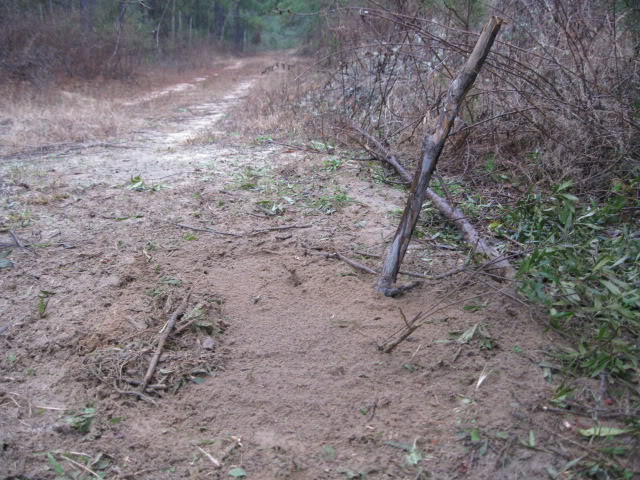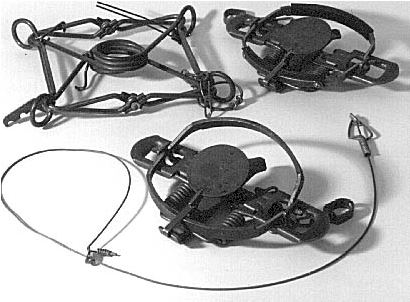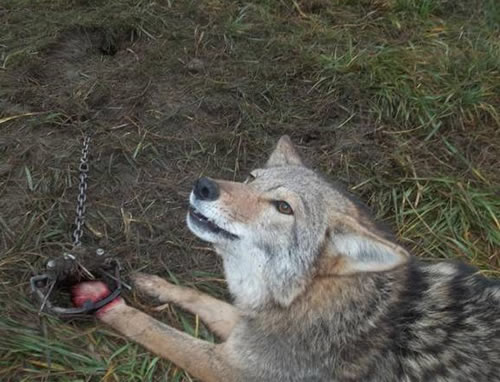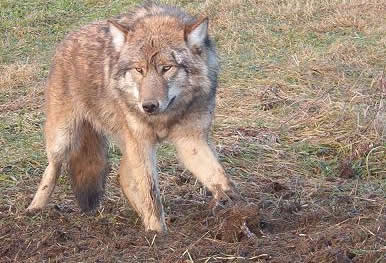
Learn About Traps
Learn About Traps
For trap alerts in Montana of reported traps and snares: Click here.
Information on types of traps, signs of trapping and what to watch for, how to release pets from traps, and studies conducted on the efficiency and injuries from traps and snares.
Types of Traps
There are three main types of body grip traps used in Montana. These are the most frequently, basically exclusively, used. The conibear, top left; leghold or foothold traps, on right and center; snare, which is a wired cable on bottom. Another type of trap is known as a cage trap.

Signs of Trapping
Recognizing & Avoiding Wildlife Traps while Walking your Dog
Idaho Fish & Game Wildlife Biologist Jennifer Struthers takes viewers into the field to demonstrate how wildlife traps are disguised.
Trap Research and Findings
Literature Review on the Welfare Implications of Leghold Trap Use in Conservation and Research by American Veterinary Medical Association (PDF)

Wolf Trapping Study
June 14, 2016
“Wolves were captured, euthanized, and examined during normal depredation activities in Minnesota, United States, between April and October, with almost all captures occurring when temperatures were above freezing. The trap investigated was a Livestock Protection Company #4, with smooth, offset jaws. [Note: only results for the control traps without tranquilizers are here summarized. We limited our summary to the control traps because this review is focused on trapping methods used by the public. Because tranquilizers are unavailable to the general public, we omitted the results from traps equipped with tranquilizer devices.] Eighteen percent of wolves captured had dental injuries rated as “moderate” to severe,” and the rest were described as uninjured to having “mild” injuries. Serious leg injuries were relatively common; however, compared with different trap types tested in other studies, 63 percent were scored as having moderate to severe damage including major cutaneous lacerations, tendon damage, and fractures including some to the radius or ulna.”
Sahr, D.P., and Knowlton, F.F., 2000, Evaluation of tranquilizer trap devices (TTDs) for foothold traps used to capture gray wolves: Wildlife Society Bulletin, v. 28, p. 597-605.
Capture Myopathy
Science contradicts the alleged un-harming of trapped animals and the proclamation of them being released “uninjured”.
“Capture myopathy can occur naturally when prey animals are attempting to avoid predation, but it is usually caused by humans. This is because animals are adapted to escape from predators, but are not adapted to struggle for long periods of time in man-made restraints, aka traps and snares. Capture myopathy occurs when animals overexert themselves (struggling in a trap for example) so much that physiological imbalances develop and result in severe muscle damage.
Capture myopathy may result in sudden death, or clinical signs may develop hours, days, or up to two months following capture.” This is how trapping methods to help animals, i.e. relocate, reintroduce, differs from recreational, commercial and trapping methods whose purpose is to kill. The former involves frequent and sometimes constant trap monitoring.
We have no required trap check time interval in Montana, except for wolves are permitted to linger in traps for no more than 48 hours. Some animals suffer trapped for days, weeks, even a month, legally.
Based on FWP reports, an average of at least 60,000 wildlife are trapped and killed in Montana annually. If we consider the collateral damage and those claimed released “uninjured” what is the real toll trapping takes on wildlife?
Wolf Culls Ensnared in Ethical Debate
Mar. 11, 2016 – The Globe and Mail (Mark Hume)
Wildlife research for a quick “humane” death from snares finds just the opposite occurs! A retired predator-control expert says animals in snares take hours or even days to die. “There is just a multitude of things that interfere with getting the perfect catch.”
Reveal’s Tom Knudson Tests a Leghold Trap
“Truth is, traps are designed to restrain an animal without injury, in the same way handcuffs were designed to restrain humans.” Montana Trappers Association
Can you imagine if cops used these devices to restrain humans?
Just how powerful are the grisly steel-jaw traps behind America’s booming fur industry? Reveal reporter Tom Knudson demonstrates.
Best Management Practices (BMPs)
Millions of animals are trapped annually in the U.S. for their fur. In response to international pressure concerning fur sales, and regarding animal welfare, the Association of Fish & Wildlife Agencies (AFWA) conducted a 20 year study for what they refer to as Best Management Practices or BMPs for trapping.
Trappers were utilized from roughly 30 states. 19 “furbearer” species were trapped and the injuries from over 80 restraining traps which included foothold/ leghold traps, foot activated snares, plus cage traps were evaluated. Over 8,500 animals were necropsied. According to the study, “0.5% of the animals were dead upon trap inspection, deemed trap-related stress or injury.”
The trapped animals injuries were evaluated on a scale from mild to severe. Up to 70% of the animals trapped are permitted to suffer moderate injury for the trap to be recommended under BMPs. Moderate injury includes trauma such as eye lacerations, loss of digit, “simple rib fracture”, severe joint hemorrhage, major foot pads and tongue lacerations.
The other 30% of animals are permitted under BMPs to suffer severe injury. Falling under this category, are amputation of 3 digits or amputations above the paw, compound fractures, spinal injuries, and death.
The BMP study and findings were based on 24 hour trap checks. Other than 2 limited exceptions, Montana has no trap check requirement. How much injury do you think these trapped creatures suffer from being legally left for days upon days, some even weeks, and exposed to the elements and predation? Don’t be fooled by the fur coat industry caring about the animals. Think trapping has become humane? Think again.
